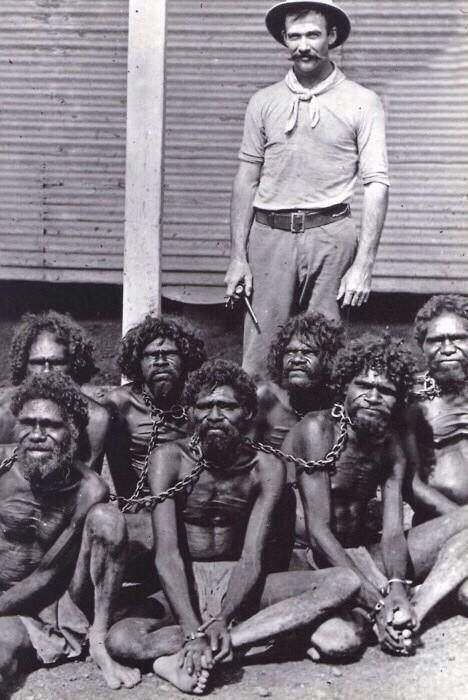
Views: 2962
It is hardly a coincidence that the Declaration of Independence, Adam Smith’s Wealth of Nations, and Johann Friedrich Blumenbach’s On the Natural Variety of Mankind were all published within a year of one another, for each supports a necessary aspect of a larger, integrated project. Not only was the rationale for seizing political power (provided by the Declaration) supported by Smith’s popular text (which justified rule by the wealthy business class). Because this wealth and power was contingent on slavery, and territories seized by conquest, Blumenbach’s theory that the “Caucasian race” (a designation he coined, by the way) was the supreme race was also instrumental in justifying and reinforcing the new political economic order.
Prior to Blumenbach, the Swedish scholar Carl Linnaeus’ theory that there were four geographically defined races provided the accepted taxonomical understanding of human diversity. Among his innovations, Blumenbach not only added a fifth race, he arranged the five in an hierarchy, placing the “Caucasian” at the top. And even though this pseudo-scientific theory has been debunked repeatedly over the years, by such mainstream sources as PBS no less, the superstition of racial superiority, inferiority, and genetics continues to influence thought. This, of course, is not to say that a person of African origin, for instance, and a person of European origin have no genetic differences. However, not only are there often greater genetic variations within a so-called race than between people said to belong to different races, what counts as a racial trait or characteristic is completely arbitrary. Indeed, racial classifications changed repeatedly historically according to the need to rationalize political and economic exploitation. Consequently, while there is no such thing as race in an anthropological sense, the concept of race does have a sociological meaning involving socially constructed identities and differences. In addition to Africans and Asians, for instance, the Irish were classified by the British as a different race in order to justify maintaining Ireland as a colony. And, in the 19th century, even the poor (that heterogeneous class) were regarded as a distinct race in the US – as were Italians, and others, who “became white” after World War II.
As such, it is not only the case that poverty and race, like race and wealth, cannot be easily disentangled. This entanglement, and the relations of domination it implies, demonstrates that poverty is, in general, not just a condition marked by the absence of economic power. Poverty refers to a lack – or, more accurately, to a deprivation – of economic and political power. Visible in high rates of incarceration, and epidemic levels of preventable diseases, among other socially produced injuries, in it purest form this weakness manifests as the slave. In light of this, it is no coincidence that the term injury is not just etymologically related but conceptually related to the notion of injustice. And justice, if it means anything at all, requires that the ongoing injuries of poverty be repaired. But how is a society to repair such injuries? What must be accomplished in order to correct the deeply entrenched and entangled injustices of the present social situation? What type of repairs, or reparations, must be made?
The concept of reparations, of course, requires clarification. In certain respects the concept overlaps with the equitable notion of restitution – according to which, if justice is to be effectuated, a party injured or harmed by another must be made whole (repaired) by the injurer. As Ta-Nehisi Coates has so eloquently argued, there is no question that the African American community has been monumentally harmed by the political and economic institutions of the United States. In addition to more recent forms of racial discrimination (and its obverse, racial privilege) such as redlining and blockbusting, few industries have not benefited, directly or indirectly, from racism. From insurance companies (such as Aetna) who profited enormously from the institution of slavery, to industrial and agricultural companies, not to mention banks, finance, and real estate interests, tremendous fortunes were made – and, importantly, continue to be enjoyed – from the systemic abuse and exploitation of millions of people. Not only did slaves build the White House, as Michelle Obama reminded us earlier this week; the labor of those slaves continues to reverberate in the walls and halls of the White House, and other structures, in the form of value (monetary, and otherwise). Derived from an injustice, this type of enrichment is articulated in the law by the doctrine of unjust enrichment.
Based on the ancient Roman legal maxim nemo locupletari potest aliena iactura, the doctrine of unjust enrichment holds that when one is enriched at another’s expense a duty arises to rectify this by disbursing the unjustly acquired enrichment. To take a standard example, if X trespasses over Y’s property every day, and saves a hundred dollars over the course of a year because of this, X would be unjustly enriched by a hundred dollars. Even if no concrete harm is suffered by Y, X would have to return a hundred dollars to Y. If we apply the mainstream doctrine of unjust enrichment, then, to the overall social situation, there is no question that the African American community ought to be reimbursed, and not merely for the collective injustice suffered. Those who profited from this suffering (and continue to enjoy the wealth and privilege derived from such suffering) should be dispossessed of their unjustly attained advantage.
In addition to the African American community, though, we must not neglect to consider the fact that the fields their ancestors slaved over were taken by force. Contrary to legally binding treaties, the conquest and appropriation of the continent not only involved the murder of millions, it continues to harm millions of Native Americans. Therefore, according to the doctrine of unjust enrichment, the fortunes derived from exploiting the continent (much of which is also currently accruing interest) ought to also be divested from those unjustly enriched, and returned to those unjustly deprived.
This, however, does not satisfy a radical interpretation of the doctrine of unjust enrichment. In spite of the fact that African Americans and indigenous people have suffered inordinately, and continue to suffer from poverty and other institutional harms as a result of historical wrongs, immigrants from across the world (Ireland, Eastern, Central, and Southern Europe, Western, Central, Southern, and Eastern Asia, and the rest of the Americas, among other places) have suffered generations of exploitation as well. From coal mines, to fields, to countless sweatshops and factories, generations of people have lost limbs, lives, and well-being producing tremendous wealth and power for a small class of people. All of which is to say, when discussing the issue of reparations and social justice, we must address the fact that (according to the doctrine of unjust enrichment, at least) most people in this society – the urban poor, the rural poor, the working class, the shrinking middle class – deserve some form of reparation.
 Because money and property wind up spreading poverty far more than wealth, instead of thinking about reparations as the distribution or redistribution of money, or other commodities (which are alienable), we should recognize that actual justice and peace requires a social arrangement that is not regulated by the drive for profit (i.e., actual peace requires non-exploitative social relations). Unlike the racist, sexist, pseudo-democracy of the Founders, an actually democratic society requires not just inalienable rights; the concrete preconditions for the realization of these rights must be inalienable (that is, not for sale), too. So, instead of the distribution of commodities, actual social justice demands that the goal of reparations ought to be the de-commodification of those conditions necessary for an actually just society. Instead of producing conditions (such as housing, nutritious food, water, health care, a healthy environment, education, and other resources and conditions) necessary for the realization of an actually just society in exchange for something else, then, (for profit), these conditions should be produced as ends, for their own sake, unconditionally.
Because money and property wind up spreading poverty far more than wealth, instead of thinking about reparations as the distribution or redistribution of money, or other commodities (which are alienable), we should recognize that actual justice and peace requires a social arrangement that is not regulated by the drive for profit (i.e., actual peace requires non-exploitative social relations). Unlike the racist, sexist, pseudo-democracy of the Founders, an actually democratic society requires not just inalienable rights; the concrete preconditions for the realization of these rights must be inalienable (that is, not for sale), too. So, instead of the distribution of commodities, actual social justice demands that the goal of reparations ought to be the de-commodification of those conditions necessary for an actually just society. Instead of producing conditions (such as housing, nutritious food, water, health care, a healthy environment, education, and other resources and conditions) necessary for the realization of an actually just society in exchange for something else, then, (for profit), these conditions should be produced as ends, for their own sake, unconditionally.
Beyond calls for the demilitarization of the police (not to mention the abolition of the United States’ metastasizing prison system, debt amnesty, an end to endless war, and environmental justice), actual, concrete peace requires the righting of historical wrongs, and reparations. Instead of redistributing property, however, which only rearranges and reproduces injustice, actual justice (and actual democracy, as opposed to pseudo-democracy) demands freedom from the tyranny of property altogether – i.e., its de-commodification.
Originally published on 2016-07-29
Origins of images: Facebook, Twitter, Wikimedia, Wikipedia, Flickr, Google, Imageinjection, Public Domain & Pinterest.
Read our Disclaimer/Legal Statement!
Donate to Support Us
We would like to ask you to consider a small donation to help our team keep working. We accept no advertising and rely only on you, our readers, to keep us digging the truth on history, global politics and international relations.
[wpedon id=”4696″ align=”left”]










